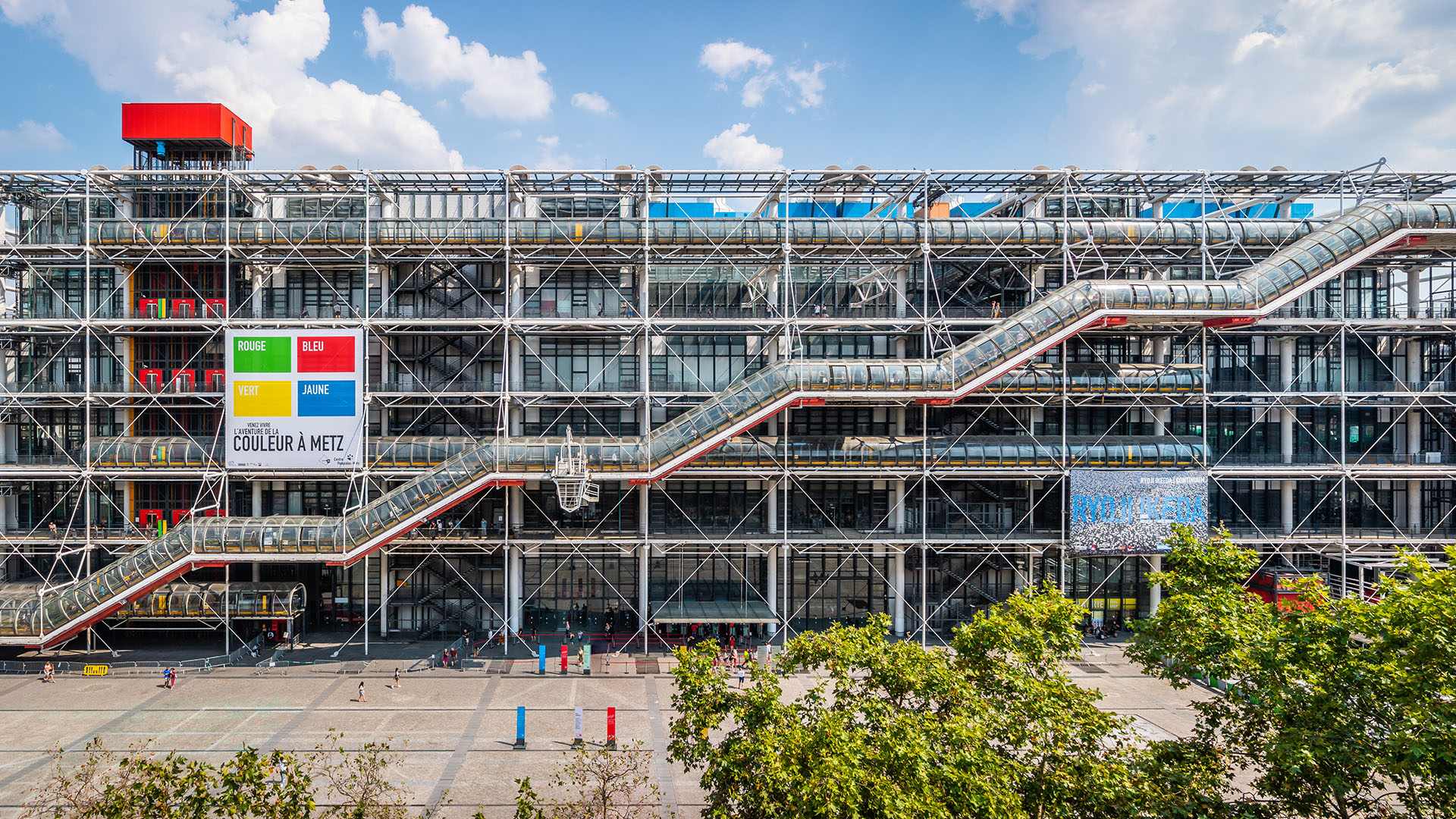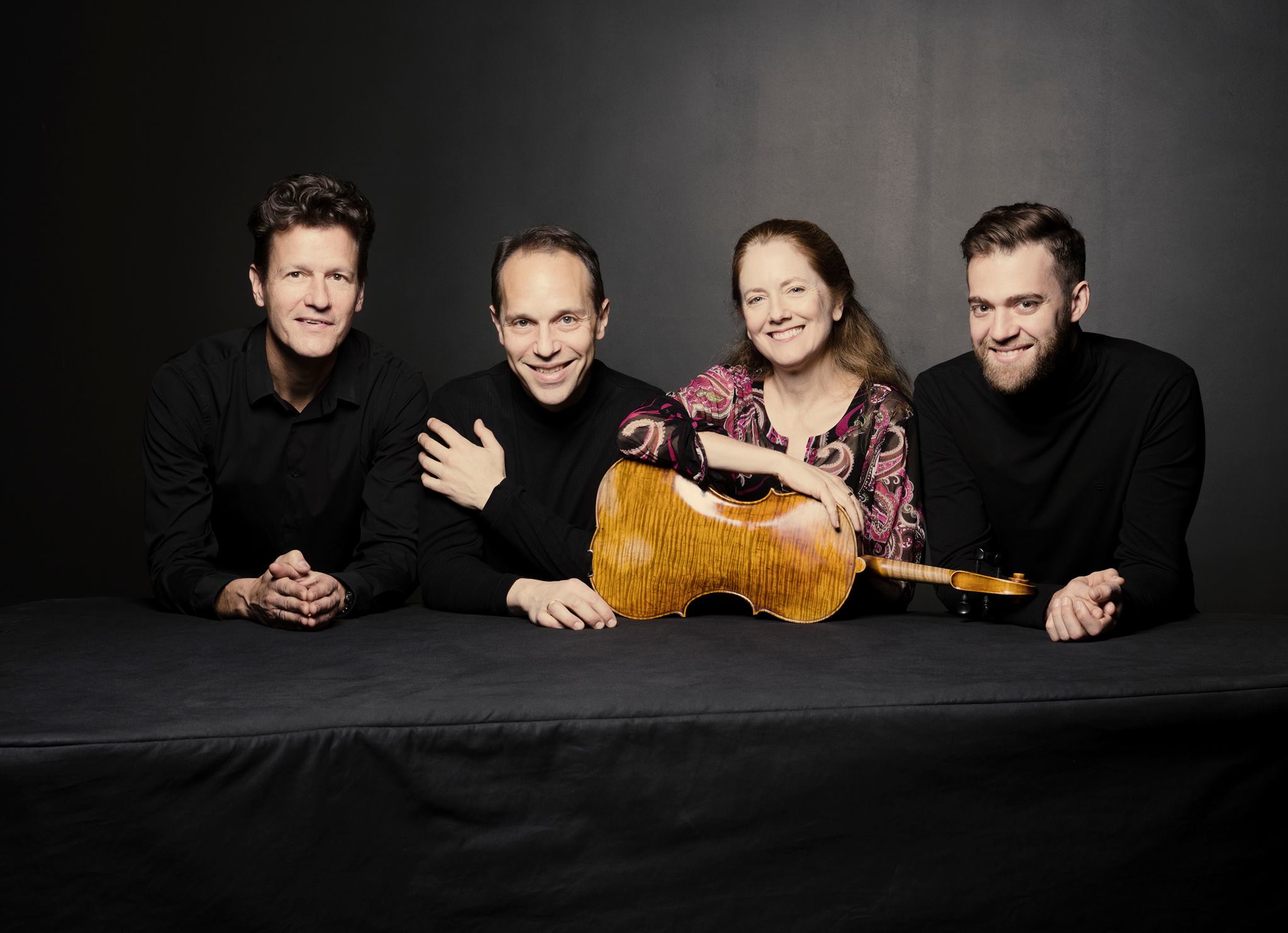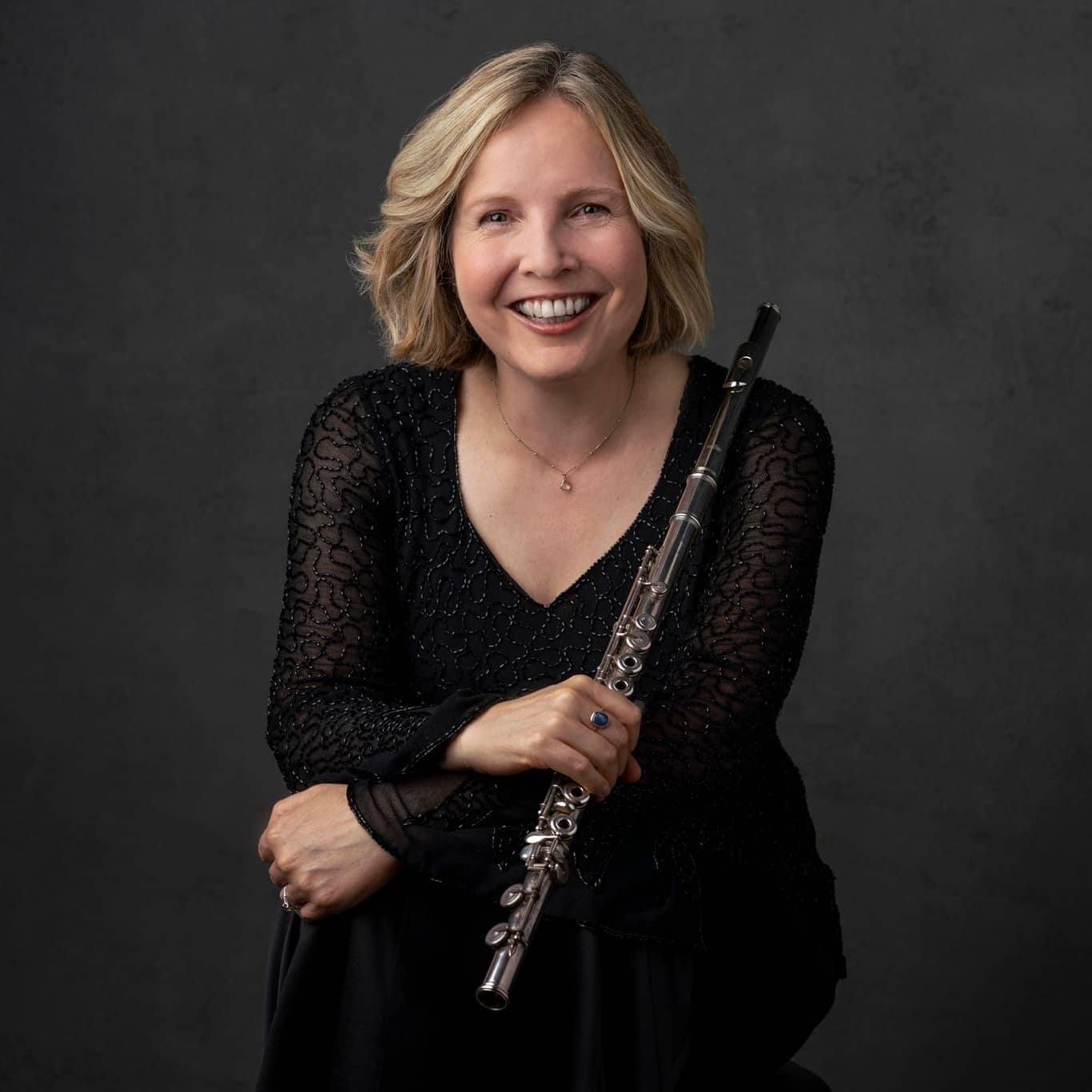Pompidou Centre will shut but 160 IRCAM staff are safe
NewsThe hypermodern Pompidou Centre in Paris will be closed from 2025 for at least five years of refurbishment.
But musicians can sleep soundly in their berths.
We learn today that the Institut de recherche et coordination acoustique/musique founded by Pierre Boulez and attached to the Centre will remain open throughout the period, protecting no fewer than 160 jobs of artists, administrators and accolytes – the three As of post-modern music.






The Centre Pompidou is not hyper modern, but a historic artefact from the sixties of the last century when ugliness was thought to greatly contribute to progress in society. Hence the settlement of IRCAM to the building (Institute for the Retrograde Conservation of Abominable Musicians).
No Borstlap performed there!
Actually, on 14 February 2013 the Ensemble Intercontemptorain did so by accident, due to an absent-minded librarian, I was called to collect the parts afterwards. All players were sick with PTSS and the conductor was banned from ever work with them again. I don’t want to name names, but it was (redacted). Not only were people in disarray but all instruments showed cracks and the lights flickered for days. The audience however were enthusiastic and were shushed by an angry PB personally on stage, who had been emergency-called from his usual brasserie.
Sally
Well, the ugliest and least functional museum I’ve ever visited is about to get a facelift. It was time.
How was it “the least functional”? Do tell. I find it to be incredibly straight forward and relatively small compared to the Louvre or the Orsay.
Too narrow entrances, very small lifts, illogical flow paths for visitors and very poor lighting. The building is really ugly. However, the permanent exhibition is very good if you want an overview of avant-garde art, including several copies of Manzoni’s Merde d’artiste.
I love Manzoni’s merde! I went to see it every time when I was in Paris. No Paris without Manzoni’s merde, I find.
Sally
You don’t need to go to Beaubourg to find merde in Paris, but the one in the museum is arguably much better preserved. On a more serious note, it truly is a stunning building. One cannot imagine Paris without it at this point. I highly recommend going up the Tour Saint Jacques (one of Paris’ best kept secrets) to appreciate the stunning view of the Centre as well as of the entire city.
When did you visit? The permanent exhibition is always well lit, more so than in other older museums around the globe. There are only 2 floors for the permanent exhibition, and I find the flow to be rather logical since it’s organized chronologically. The temporary exhibitions are held at the top floor, so that’s a no-brainer as well.
This museum is not just about Manzoni and Duchamp. In fact, they are presented as the necessary consequence of the diverse preceding artistic movements, thus enabling the audience to appreciate famous artworks in context. Starting with artists such as Matisse and van Dongen, we discover cubism, surrealism, fauvism, minimalism, modernism, futurism, and many other styles before finally arriving at the contemporary period that people love to mock. Seminal works by Picasso, Miro, Dali, Frida Kahlo, Rothko, Pollock, Otto Dix, Chagall, to name a few, are displayed in the permanent collection, and temporary exhibitions that attract the attention of the world are held all the time. I am all for a “face lift” but that does not change the fundamental value of this museum.
I have visited the Pompidou Centre 4 times in the last 30 years (the permanent collection is worth the effort, the temporary shows were mostly funny). The house is horrible, it looks like a kind of bus station of the 70’s. It should be demolished.
Did any good music come out of that Boulez research centre ?
Do you like Kaija Saariaho?
While the center was founded as a high-art enterprise by modernist, it produced software and technology that began to be taken up by the pop-music world already in the 1990s. Whether any of that music is “good” or not depends on your taste, of course, but IRCAM’s impact is all around us.
It was never meant as a cradle of music, but as a quasi-scientific centre for the development of sound art, or sonic art. That means: research into the possible sources of sound patterning and the many forms it could take. The idea was, to bring music to a higher level of sophistication and to make the art form compatible with modern times, of which science seemed to set the standards. So, completely wrong idea, and an embarrassing demonstration of ignorance about what music is. Boulez should have made ik quite clear from the beginning that IRCAM was a sonic art institution and had nothing whatsoever to do with music or music life.
This would, by the way, also have protected him from negative comparisons of his works with music.
I’m tempted to write, simply, “yes,” and leave it at that. But I’ll add that the NYC premiere of Boulez’s “Repons” in 1986 was one of the most exciting and rewarding musical experiences of my life. I was sitting in front of a group of American composers ranging from Morton Gould to Barbara Kolb to Harvey Sollberger; their collective enthusiasm is far more significant than mine.
Here it is:
https://www.youtube.com/watch?v=JhQ2AZsK7Os
I love this stuff! It’s so funny, it lifts me out of my regular moods of despondency
Sally
Anything derided by John Borstlap is worth finding out about. I don’t know much about contemporary music, I didn’t know Répons. I am listening to it now for the first time. It is challenging and fascinating, in a good way.
Good for you!
Indeed I always hope that people will take a chance and make-up their own mind, as much as is possible.
For those interested, some of the best views of Paris can be seen from the escalators on the side of the Centre Pompidou. Might be a good idea to go before it closes if one is in town. It used to be free to use the escalators but I’m not sure whether one now needs a ticket to the museum. There’s also a restaurant on the top floor and I would assume it will be closed as well.
That reminds me of the story of the writer (forgot who it was) who had campaigned fiercely, in the late 19th century, against the building of the Eiffel tower. He was found dining in the restaurant in the tower by a friend. “What are you doing here…! You were so against this tower!” Answered the writer: “Of course, and I still am; this is the only place in town where I can’t see it.”
Why in the world would you try to spin musicians keeping their jobs as a negative?
Because it’s IRCAM. Everything about it is negative, from a musical point of view.
For the innocent people who took the trouble to post downward thumbs: listen to ‘Répons’ (link above) and try to figure out what it conveys. It is not difficult. Yes, it is virtuosic, brilliant, but what does it ‘say’? What are your associations? Which violent traffic jam or catastrophe movie comes to mind?
A landscape, by the sea, sometimes calm peaceful and harmonious, sometimes in a thunder-storm, sometimes with herds of animals running, sometimes with rushing waterfalls, sometimes with treetops swaying in the wind. If you can only think of traffic jams and violent movies, I’m sorry for you.
Why, in any case, should it ‘say’ anything? Artistically organized sound has its own aesthetic justification.
That is the way some people think about music. But music is not mere pattern making. It is a quasi-language, it has a whole dimension more than mere patterns.
Therefore the Germans invented the correct term for their quilt-ridden cultivation of sound art: Klangkunst. This is the art of creating all kinds of patterns with musical instruments, and there your comparison with nature goes-up admirably.
As there is an immense range of natural sound patterns, there is a dito range of sound art (or sonic art) patterns.
Music is something different: through the subtle use of tonal relationships between the notes, something like an internal space is created which can function as a field with suggested energies flowing through a psychologically-defined narrative, taking-on a great variety of expressive colours and meanings, which are interpreted by the listener in psychological terms. In this way, music is a language of emotional meanings, and thus subjective by nature. Sonic art however tries to be objective: the patterns are what they are as such, ‘out there’, not as a medium to convey some psychology but merely as a sonic object projected in time. It does not want to be expressive, and that is not possible, because it does not use the art of musical expression as it has developed over the ages.
This is not some odd conservative opinion, but the general consensus of music listeners who are used to hear music. Also this explains the resistence of classical music audiences to sonic art which attracts a quite small numbers of aural fans.
I think the best sonic art is found in the works of Morton Feldman, like this:
https://www.youtube.com/watch?v=PgS37X4P2hM
Also in some passages of Boulez’ Pli selon Pli some nice patterns can be heard. But however much sophistication PB tried to put into his scores, they can never disguise the poverty if listened to as music. Therefore it is always better to not compare it with music.
“IRCAM. Everything about it is negative, from a musical point of view”
Borstlap spouting utter crap.
Clearly you know sweet zilch about IRCAM.
To be able to record, experiment and make progress in sound recording so as to be transmit what we hear to future generations requires highly qualified sound engineers and considerable experience especially nowadays in digital techniques, multi channel and in surround sound.
Having been invited to an excellent lecture by a member of IRCAM I can first hand say Borstlap is taking total RUBBISH.
Fortunately the French invested strongly in all aspects of musical reproduction techniques and acoustics, something the British with their once great great BBC has seen go down the toilet.
As a result acoustic spaces such as Roque d’anteron with its natural acoustic and many other techniques for improving sound spaces have made France a world leader in acoustics and recording, which suprisingly goes as far as industrial noise limitation on trains and aircraft…. (anyone noticed how quiet a A380 is??)
Acoustics, concert halls, recording and reproduction all go hand in hand in centres of excellence. IRCAM and CNRS are 2 of the French great institutions which we don’t want to lose.
Borstlap has no idea what this concept of EXCELLENCE means in engineering.
Without engineers you get the current grade in people recording artists with mobile phones – doing a huge disservice to the artists, and NOISE NOISE NOISE.
QED.
This silly, immature rant claims IRCAM is merely about acoustic engineering. But it leaves-out the whole component of sonic art composition, as if Boulez had merely wanted the organisation to be a purely sound and recording laboratory that had nothing to do with sonic art composers.
“IRCAM: a centre for musical research; a cultural centre for musical modernism,” etc. etc…. well-known all over the world.
Even my PA knows everything about it and everybody knows she is (redacted).
Before spitting hatefull gall on other people who coincidentally know something about music life, it is wholeheartedly recommended to first check your sources.
“IRCAM (French: Ircam, Institut de recherche et coordination acoustique/musique, English: Institute for Research and Coordination in Acoustics/Music) is a French institute dedicated to the research of music and sound, especially in the fields of avant garde and electro-acoustical art music.”
https://en.wikipedia.org/wiki/IRCAM
The sound engineering part is meant to give musical modernism a touch of scientific veneer, as to make the sonic art productions related to modernity. This has been necessary because of the resistance of the central performance culture of music against the intrusion of an art form which, in that concext, is disruptive and undermines audience attendance.
It is not so difficult, just some thinking and reading, and hoopla! the subject becomes clear.
Ironically, J.S. Bach was roundly criticized by the forotten Borstlaps of his day for his over-scientific approach. What else is the Wohltemperierte Klavier but the application of scientific principles to music? Unfortunately the later simplifying development of equal temperament tuning means that we seldom hear those works (or cannot because our ears have been corrupted) as they were originally designed.
This type of comment stems from the kind of people who have no idea about the relationship between music and its structure.
Of course such reactions go hand in hand with ad hominum attacks, following the usual dictum of ‘Wenn man nicht mehr weiter kann, fängt man mit dem Schimpfen an’.
Or: ‘I know you are right, only I don’t believe it’.
Structure in music is always a means to an end, and JS Bach is the perfect example of structure in the service of a musical effect, not as a separate process applied to the material, but the structural idea born from the material, or material born from the structural idea. In the latter case the structural idea is always conceived as a musical ‘instrument’, so also as structure it is thought of as a means to an end and fundamentally related to musical material. Perfect examples: the fugue, the canon.
With Schönberg the idea was born of a structural method as an independent application to the material, which was followed by post-1945 sonic artists, among which Boulez, who himself admitted that he felt constrained by serialism and instroduced elements of freedom in his work, i.e. not always following the method. Much has been written about this. Everything Boulez has said and written about ‘structure’ shows clearly that the concept of structure was an independent method – such purely numerical methods always are independent, i.e. independent from any musical idea. For instance, there is no relationship between a structural method designed to fill-out in an equalized manner the nr 12 etc. etc. and musical scales which are hierarchical.
So, the subject is so much more interesting than the superficial, angry blurbs without any grounding in knowledge.
At least I know the accusative singular of Latin homo!
I was referring, of course, to Bach’s work on temperament (organ as well as harpsichord and clavichord), which involves mathematical aand scientific knowledge of sounds and pitch.. I suspect he would have been delighted with the technical equipment of IRCAM, and with its investigation into the properties of sound. I also suspect he would have disliked equal temperament, which led (admittedly via some great music) to the dead end of Western European tonality.
But I apologize for the ‘forgotten Borstlap’. That was unfair.
The interest of performers / composers in the 18th century in tuning systems was of an entirely practical nature: to be able to play in more keys than the pure tuning would allow. Also Bach’s interest in sound production was entirely practical: how does it sound? Hence his disapproval of the early fortepianos and later-on more positive assessment when they got better. ‘Science’ had a different meaning among musicians at the time and was always fundamentally related to their art as a practical thing.
So Boulez’s interest in the physics of sound played no practical part in his compositions? Really?
PB’s idea about structure, including the physics of pure sound, was a purely materialistic and rationalistic one. He was only concerned about SOUND, not about music. His aesthetics were also entirely focussed upon sound as sound. Read his ‘Orientations’, a representative collections of his writings: Faber & Faber 1998.
https://www.amazon.co.uk/Pierre-Boulez-Orientations-Collected-Writings/dp/0571143474
If one day you could be qualified to hold an opinion on this subject you would have some credibility.
Living in France, speaking fluent technical French, training by one of the best living professors and working with music festivals including COLMAR twice btw…
One of my best sound engineers lives and works in Paris.
For me, training others in sound engineering practice is passing on this knowledge inc in Eastern Europe.
I don’t vaunt this CV I just work and I know a lot more than you will ever do about Ircam people and the much respected institute…
Oh and btw if you are reading this, it’s because of DIGITAL technology, the same stuff as we use for recording.
You haven’t a clue have you?
Just writing more Ascii BS to fill up your bored little life.
Accolytes? IRCAM is involved with World of Warfare – who knew!
“artists, administrators and accolytes [sic.]”
You sneer conspicuously — but them’s who get the curtain up.
IRCAM will not close for the simple reason it is not inside the Centre Pompidou, but in another building, which will not be affected.
Centre Pompidou is from the seventies and not the 60’s (John Borstlap).
Finally, major works from Luca Francesconi, Gérard Grisey, Saariaho, Berio etc…etc…(Répons) were created thanks to IRCAM.
The project was conceived in 1969 by then French President, Georges Pompidou.
Yes and it created a new term for ugliness: pompidoulious (french: pompidoulieux).
“Accolytes”? Condescension is always more effective if you do it with the correct spelling!
Great place. And yes, it needs the work.
Where will we go for beautiful modern art in Paris?
Just walk around the Pompidou Centre’s façades and you will be saturated for life.